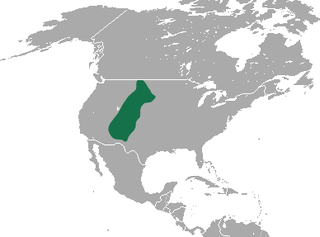
The family Caenolestidae contains the seven surviving species of shrew opossum: small, shrew-like marsupials that are confined to the Andes mountains of South America. The order is thought to have diverged from the ancestral marsupial line very early. They were once included in the superorder but it is now known that Ameridelphia is paraphyletic, having given rise to Australidelphia, and thus could be considered an evolutionary grade. Genetic studies indicate that they are the second most basal order of marsupials, after the didelphimorphs. As recently as 20 million years ago, at least seven genera were in South America. Today, just three genera remain. They live in inaccessible forest and grassland regions of the High Andes.

The red-toothed shrews of the subfamily Soricinae are one of three living subfamilies of shrews, along with Crocidurinae and Myosoricinae. In addition, the family contains the extinct subfamilies Limnoecinae, Crocidosoricinae, Allosoricinae and Heterosoricinae. These species are typically found in North America, northern South America, Europe and northern Asia. The enamel of the tips of their teeth is reddish due to iron pigment. The iron deposits serve to harden the enamel and are concentrated in those parts of the teeth most subject to wear. Members of the genera Chimarrogale, Nectogale, Neomys (Nectogalini) and some members of Sorex (Soricini) are known as water shrews, due to having a semi-aquatic lifestyle.

The southern short-tailed shrew is a gray, short-tailed shrew that inhabits the eastern United States.

The genus Cryptotis is a group of relatively small shrews with short ears, which are usually not visible, and short tails, commonly called small-eared shrews. They have 30 teeth and are members of the red-toothed shrew subfamily. Since 1992, Neal Woodman at the United States National Museum has been in the process of revising the genus. To date, this has resulted in an increase in the number of species from 12 to 30.

Crawford's gray shrew, also known as the desert shrew, is a small shrew found in the southwestern United States and northern Mexico. It is a member of the family Soricidae of the order Eulipotyphla. It was the only known member of the genus Notiosorex until two species, N. villai distributed in the Mexican state of Tamaulipas, and N. evotis distributed along the northwest coast of Mexico, were named. A fourth distinct species, N. cockrumi, was discovered in the U.S. state of Arizona and named in 2004.

Neurotrichus is a genus of shrew-like moles. It is classified, together with the fossil genus Quyania, in the tribe Neurotrichini of the subfamily Talpinae. The only living species is the American shrew-mole (N. gibbsii) of the northwestern United States and British Columbia. A fossil species, Neurotrichus columbianus from the Hemphillian of Oregon, was placed in the genus in 1968, but this animal is now thought to be more closely related to the Chinese fossil genus Yanshuella.

The piebald shrew is a shrew found in the Turan Lowland east of the Caspian Sea in Iran, Turkmenistan and Uzbekistan.

The genus Crocidura is one of nine genera of the shrew subfamily Crocidurinae. Members of the genus are commonly called white-toothed shrews or musk shrews, although both also apply to all of the species in the subfamily. With over 180 species, Crocidura contains the most species of any mammal genus. The name Crocidura means "woolly tail", because the tail of Crocidura species are covered in short hairs interspersed with longer ones.

Notiosorex cockrumi, also called Cockrum's gray shrew or Cockrum's desert shrew, is a tiny species of shrews named in 2003. This red-toothed shrew, which is as light as a penny, is the first new mammal species from the U.S. state of Arizona since 1977. Its range extends from Arizona to central portion of the Mexican state of Sonora.

The large-eared gray shrew is a species of shrew.

Villa's gray shrew is a shrew native to northeastern Mexico, where it is called musaraña.

Microgale is a genus of mammal in the family Tenrecidae. There are 21 living species on the island of Madagascar and one extinct species known from a fossil. Some species have been discovered in the last twenty years.

Myosorex is a mammal genus in the Soricidae (shrew) family. The genus, collectively referred to as the mouse shrews, contains these species:

The dwarf shrew is a species of mammal in the family Soricidae endemic to Arizona, Colorado, Montana, Nebraska, New Mexico, South Dakota, Utah, and Wyoming in the United States. The type locality is Estes Park, Colorado, USA.

Preble's shrew is a small shrew distributed across the Great Basin of the United States and southern British Columbia in Canada.

Trowbridge's shrew is a species of mammal in the family Soricidae. It is found in southern British Columbia in Canada and in Washington, Oregon, and California in the United States.

Notiosoricini, whose members are known as the North American gray shrews, is a tribe of shrews in the family Soricidae, including the genera Megasorex and Notiosorex. They are found across the southwestern United States and most of Mexico.
Notiosorex harrisi is an extinct species of shrew from the subfamily Soricinae.
















